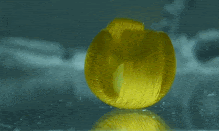The new project was presented by scientists from the US Northwestern University . They have developed a miniature octopus robot (although it has only four legs) that will pick up and transport goods, overcome bumps and even dance an underwater break.
So far, its dimensions do not exceed one centimeter, but it can already walk in the rhythm of human walking (although much slower due to its size), and without the use of complex equipment, hydraulics or electricity, Science Robotics reports .
The project was carried out under the direction of Samuel Stupp, professor of the Department of Materials Science at the University. Its previous model could crawl on the underwater surface, making one step every 12 hours. The new one takes one step per second.
The robot frame is made of ferromagnetic nickel filaments. They support the robot's main body, which consists of a hydrogel that reacts to light and magnetic fields, and is 90% water. When exposed to light, the hydrogel becomes hydrophobic. Water molecules are displaced, the robot changes shape and "comes to life". When the light is turned off, the molecules return to their original state and the robot becomes flat and motionless.

Manipulating the shape using lighting helps the robot to take the load, throw it off, and if the load is sticky, the robot performs a rotating "break dance" to get rid of it.

The new robots can be used to recognize and remove unwanted particles in certain environments, catalyze chemical reactions, or, for example, deliver biotherapeutic drugs or cells to certain tissues.

The structure of the robot close up. Photo: Li et al. Sci. Robot. 6, eabb9822 (2020)
“We would like to create 'armies' of microrobots that can perform a complex task in a coordinated manner ,” says Stupp. "We can tune them at the molecular level to interact with each other to mimic a flock of birds and bacteria in nature or a school of fish in the ocean."